 So Microsoft is to buy Nokia’s phone division for $7.2 billion. Most commentators are pretty neutral on this and Microsoft’s stock is even down on the day. I’m guessing a lot of people are thinking that departing CEO Steve Ballmer’s swansong (he announced his retirement from the business last week) is little more than a pairing of two dogs and all this will create is a mongrel. On the face of it they may be right – Nokia has undoubtedly failed to bring its proposition into the smartphone era and Microsoft’s mobile platform has equally failed to gain widespread acceptance. Both struggle with some major issues in competing with Apple with iOS and Samsung with Android.
So Microsoft is to buy Nokia’s phone division for $7.2 billion. Most commentators are pretty neutral on this and Microsoft’s stock is even down on the day. I’m guessing a lot of people are thinking that departing CEO Steve Ballmer’s swansong (he announced his retirement from the business last week) is little more than a pairing of two dogs and all this will create is a mongrel. On the face of it they may be right – Nokia has undoubtedly failed to bring its proposition into the smartphone era and Microsoft’s mobile platform has equally failed to gain widespread acceptance. Both struggle with some major issues in competing with Apple with iOS and Samsung with Android.
And yet there is a great possibility that the naysayer’s will be proven wrong and this coupling will become a marketing case that B-schools will adopt globally.
Microsoft’s acquisition: Why Nokia is a good buy
Let’s think about the situation: whilst Nokia has struggled to capture the imagination of the affluent west, it has done a pretty reasonable job of making cheap, Internet-enabled handsets available to consumers in the developing world. With 3G networks rapidly become ubiquitous (during a recent walking trip in India, I was able to download email atop a 2600 meter-high Himalaya), the major barrier to internet adoption for many is the availability of affordable devices. Nokia has ample expertise in building these devices and if it could unpick its tangled route-to-market strategy, it could easily take a solid position in the massive untapped market that the bottom of the global pyramid represents.
For its part Microsoft remains the world’s dominant provider of operating systems and programs for home computing. Indeed in conversation with a recently departed director of marketing at Microsoft, I was told that nearly 95% of personal computers in the developing world run on Microsoft. However, the company has failed to realize profitable revenue streams from this not because consumers reject the brand, but because of the ubiquity of pirated product. The same former exec suggested that converting just a tiny percentage of the world’s pirated users to official licensees would add huge sums to the company’s topline.
As developing world consumers enter the Internet-enabled market, the most common point of entry today is not a desktop but a mobile device. With this in mind not only is Microsoft’s tie up a brilliant opportunity to gain ground back from Google and Samsung, but also it’s a fabulous way to ensure that revenue from licensed software and services (think Skype and Bing) is returned to the company.
Good acquisition – where’s the marketing?
So far this all reads like a great case to illustrate a smart acquisition strategy. But there’s little in this which relates to marketing right? But here’s the thing, delivering on the promise of this tie up is a major marketing challenge. At engage, we advocate the need for Total Marketing strategies – ones that meet the needs of the consumers who will use the product, shoppers who will buy the product and retailers who stock the product. Microsoft can only be successful if the approach they take fully embraces this relatively simple concept. If they do, then graduate students will be studying their marketing success for years to come.
5 Marketing Challenges Microsoft Faces Now
The managers faced with delivering on this challenge now have five key strategic questions to resolve:
- Which consumers should we prioritize? Most of the hype surrounding mobile devices focuses on the pace at which smartphones have been adopted by the global middle class. Accepting this may be a large potential oportunity for a Microsoft led mobile offer; I would argue that this should not be their priority. Not only have both brands struggled in this space, but also both brands have significantly more to gain from a much larger, less affluent consumer base which as yet no single manufacturer has a monopoly over.
- What shopping behavior will we have to create to put sets into consumer’s hands? Getting less affluent shoppers to part with a large proportion of their disposable income is a major ask and a significant decision for the individuals involved. Not only will the new business have to ensure the product is available to these shoppers but equally that they can communicate the benefits of the product to them and that they can create an offer in the form of pricing and promotion that will stimulate these shoppers to buy.
- Which retail environments do we have to be in? Accessing up to a billion new buyers globally is a challenge for anyone and it’s going to demand that Microsoft in particular have a major re-think about their retail strategy. The shoppers they may choose to target don’t all have access to shopping malls and large format stores, so the new unit will have to get the product into retail channels where they may have little or no expertise. They may well be challenged to develop competence in managing extended routes to market and many millions of independent retailers in a way they have not been in the past.
- What’s the best marketing mix? A traditional approach to media and communication, especially one that revolves around glossy ads and flagship stores will probably not be effective if the new business wants to secure sales to a new cohort of shoppers . Microsoft and Nokia may well have to create massively different messaging and utilize media that to date they may not have considered relevant.
- What investment is this all going to require? Way beyond the investment in new product engineering, the mobile team is going to have to consider the surgical investments needed to ensure that they secure retailer’s support ahead of brands like Huawei and Samsung.
I for one will be interested to see how rapidly Microsoft are able to embrace these challenges now and how effectively they are able to execute against them in the future. I believe that if they get it right, Microsoft’s acquisition of Nokia could well be a brilliant buy that leaves competitors asking what has happened.
To learn more about how Total Marketing could help your company realize the opportunities you see in the marketplace, contact me by clicking here.
Image courtesy of Flickr user Vernieman
 In the
In the 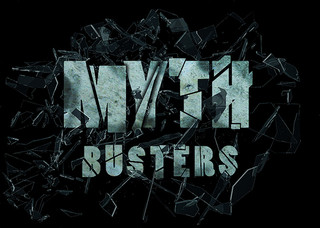
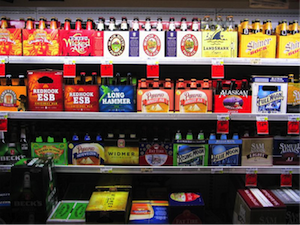

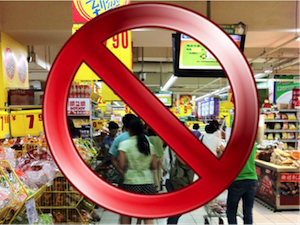
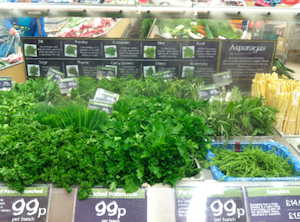 This is a herb display in UK retailer Morrison’s – my poor photography probably doesn’t clearly show that the fresh plants on display are being gently bathed in a steady fine mist of fresh water. Its keeps the stock looking good and super fresh but it also says, “You can’t get this product any fresher unless you grow it yourself”. Little tricks like this help shoppers feel that the trip to this store is worth making. Morrison’s have introduced a number of ideas like this throughout their stores, which makes shopping there so much more rewarding than a trip to Tesco and Asda – oh and by the way, the prices are good too!
This is a herb display in UK retailer Morrison’s – my poor photography probably doesn’t clearly show that the fresh plants on display are being gently bathed in a steady fine mist of fresh water. Its keeps the stock looking good and super fresh but it also says, “You can’t get this product any fresher unless you grow it yourself”. Little tricks like this help shoppers feel that the trip to this store is worth making. Morrison’s have introduced a number of ideas like this throughout their stores, which makes shopping there so much more rewarding than a trip to Tesco and Asda – oh and by the way, the prices are good too!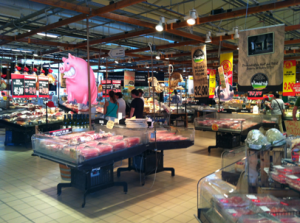 If you want to see quality experiences done really well, visit a supermarket in Italy and have a look at fresh foods. This is Iper’s fresh foods section – each area is carefully segmented into a shop-in-shop environment which focusses not on the price of the product but on the breadth of range and its quality. Sure there are plenty of deals too, but this an extra reason to shop, not the primary reason to be there. I mentioned in my
If you want to see quality experiences done really well, visit a supermarket in Italy and have a look at fresh foods. This is Iper’s fresh foods section – each area is carefully segmented into a shop-in-shop environment which focusses not on the price of the product but on the breadth of range and its quality. Sure there are plenty of deals too, but this an extra reason to shop, not the primary reason to be there. I mentioned in my 
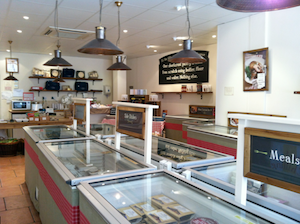 Specialist food retailing is going through resurgence in many markets and I particularly liked this store, again in the UK. Cook is a franchise operation with nearly 70 stores and the big idea is that ready-to-cook meals are rarely flexible enough to cater for either very large parties or very small ones. Cook offers a seasonally changing menu of frozen, heat in the oven meals that come in servings for one to six people.
Specialist food retailing is going through resurgence in many markets and I particularly liked this store, again in the UK. Cook is a franchise operation with nearly 70 stores and the big idea is that ready-to-cook meals are rarely flexible enough to cater for either very large parties or very small ones. Cook offers a seasonally changing menu of frozen, heat in the oven meals that come in servings for one to six people.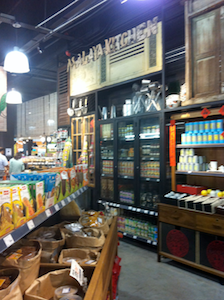 I blogged about BIG (Ben’s Independent Grocer) in Malaysia recently but I want to refer to them again, because the shopping environment theyve created is just so nice.
I blogged about BIG (Ben’s Independent Grocer) in Malaysia recently but I want to refer to them again, because the shopping environment theyve created is just so nice.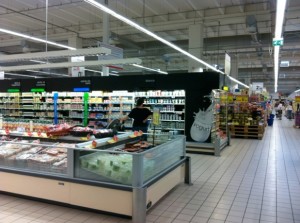 Almost a year ago I posted a blog explaining why I thought
Almost a year ago I posted a blog explaining why I thought 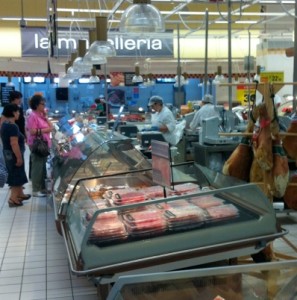 Another example of excellent in-store execution is in Carrefour’s “Macelleria” (Butchery), where shoppers queue to get their hand cut hams from a team of well-trained, efficient staff, in a well-laid out and fully-equipped deli station. And whilst the station itself does little to re-create the glamour of shopping in a family-owned specialist, it does a great job of delivering on Italians’ needs in terms of choice, freshness and appropriate pricing.
Another example of excellent in-store execution is in Carrefour’s “Macelleria” (Butchery), where shoppers queue to get their hand cut hams from a team of well-trained, efficient staff, in a well-laid out and fully-equipped deli station. And whilst the station itself does little to re-create the glamour of shopping in a family-owned specialist, it does a great job of delivering on Italians’ needs in terms of choice, freshness and appropriate pricing.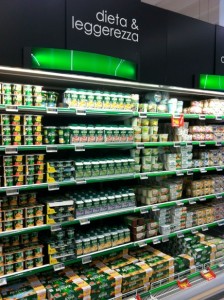
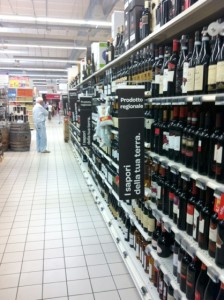
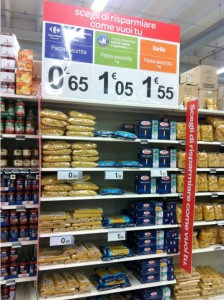 Too much of Carrefour’s focus in other countries is on promotions and whilst in these stores there were plenty of offers, one didn’t feel that the core message was ‘cheap’. What was interesting however was the clever use of pricing to encourage active comparison and to facilitate choice. These stores did this in two ways – the first very clearly, the second much more covertly.
Too much of Carrefour’s focus in other countries is on promotions and whilst in these stores there were plenty of offers, one didn’t feel that the core message was ‘cheap’. What was interesting however was the clever use of pricing to encourage active comparison and to facilitate choice. These stores did this in two ways – the first very clearly, the second much more covertly.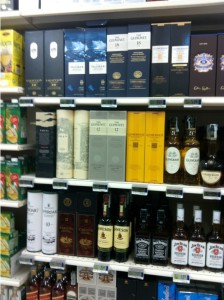 The second, more covert strategy is shown on the whiskey fixture.
The second, more covert strategy is shown on the whiskey fixture.